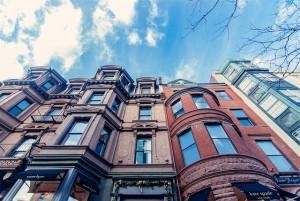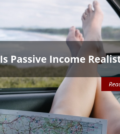- 4 Unexpected Things I’ve Learned From Buying My First Mobile Home Park
- How Ironic: America’s Rent-Controlled Cities Are Its Least Affordable
- U.S. homes are still a bargain on the international market
- Getting The Best Possible Quality Photos On MLSs and Syndicated Sites
- Home buyers in these markets have the upper hand
Why You Should Put 20 Percent Down on Rental Properties

Rental properties have been a fantastic investment for me. I have 13 rentals, which produce an awesome monthly income and have increased my net worth as well. I have bought all my rental properties using 20 percent down investor loans with a portfolio lender (except my first, which was 25 % down). There are ways to buy properties with less money down, but those techniques have serious limitations. The cash flow will be less and it will be harder to find great deals with less than 20 percent down loans.
I have used refinances to buy rental properties with 20 percent down, but I still consider a refinance my own money. I lowered the equity on my personal residence and I have lowered the equity on some of my rental properties in order to buy more rentals. However I think there is a big difference between refinancing properties to get cash and borrowing the down payments from someone else. There is also the option of buying houses as owner occupant with less money down and then turning them into rental properties down the road. I think this is a great strategy to get started, but it will be tougher to make money with rentals if you are financing more than 80 of the value.
How much less will cash flow be on a loan with more than 20 percent down?
In my article , I discuss 16 ways to reduce the amount of cash you invest in rental properties. One of the best ways to invest in rentals is to buy as an owner occupant, live in the home one year (or whatever your lenders requirement is) and then rent out the home. With some loans like VA you can put nothing down and some conventional loans are down to 3 percent down. Little money down sounds great, but that last 20 percent of the value of a home is usually much more expensive to finance than the first 80 percent. Why is buying as an owner occupant with less money down worse than putting 20 percent down?
In my article How to Buy Investment Properties With Little Money Down, I discuss 16 ways to reduce the amount of cash you invest in rental properties. One of the best ways to invest in rentals is to buy as an owner occupant, live in the home one year (or whatever your lenders requirement is) and then rent out the home. There are many different loans you can get as an owner occupant that will allow less than 20 percent down. With some loans like VA you can put nothing down and some conventional loans are down to 3 percent down. Little money down sounds great, but that last 20 percent of the value of a home is usually much more expensive to finance than the first 80 percent.
I am going to use one of my rental properties as an example to show how much more money it costs to use a little money down loan than a 20% down loan. I bought rental property 11 for about $109,000 and it needed about $12,000 in repairs. I put 20 percent down and paid those repairs out of my pocket.
My payment on this property is $544 a month, which includes taxes and insurance. The house is rented for $1,400 a month and cash flow is $464 with property management fees (I also included maintenance and vacancies). My cash flow calculator can help you determine cash flow on any property.
If I were to buy that home as an owner occupant with a 3.5 percent down FHA loan I would have much less money into the house, but my payments would be much higher. My loan would be higher and I would most likely have to pay mortgage insurance unless I was eligible for a VA loan. Since the loan amount would be higher on a 3.5 percent down payment the payments without taxes and insurance would be $510 a month. Add in the taxes and insurance on this property and the mortgage payment would be $610 a month, but there are more costs.
The mortgage insurance on this loan would be about $75 a month, making your payment $685 a month instead of $544 a month.
Here are the comparisons of the two loans
—————– 20 percent down 3.5 percent down
Down payment $21,800 $3,815
closing costs $2,725 $3,800
Repairs needed $12,000 $12,000
Total cash needed: $36,525 $19,615
Payments $544 $685
Cash flow $464 $323
As you can see the total cash needed for the low down payment FHA loan is much less and the returns are still decent for cash flow. The mortgage insurance on FHA can never be removed from the loan unless you refinance the property. If you get a conventional loan, you may be able to remove the mortgage insurance in a few years after the loan has reached 80 percent loan to value. However, there are some major problems that have not been considered with the low down payment.
Why can’t many owner occupants get loans on houses that need work?
I use a portfolio lender to finance my rental properties. They are a great lender and have many advantages over a larger bank.
- I can finance more than four properties (I have 14 mortgages with them)
- I do not have to get an appraisal on loans under $100,000
- I do not have to worry about the condition of the home causing the loan to fall through
- I can finance fix and flips with them as well
The biggest problem most investors will run into when trying to buy great deals is the condition of a home when they buy it. Almost all owner occupant loans will require a home to be in livable condition and many regular investor bank loans will as well. Luckily my lender does not care about the condition of a home and I that is one reason I am able to get so many great deals. There is no way I could have gotten a loan on rental number 11 as an owner occupant, in fact it was listed as conventional or cash financing only.
Most of my rental properties could not have been bought with owner occupied financing or most conventional financing either. There is no way I could have bought most of my rentals with little money down, because the sellers were not making repairs and the home was not considered “livable” by lending standards. My portfolio lender requires at least 20 percent down.–>
You will have to pay more money for houses using little money down loans
When I buy houses I want to buy them cheap, because I gain instant equity and it increases my cash flow. I have bought many rentals, but the deals I get are not readily available on the market. I have to be very patient and jump on them very quickly. Being a real estate agent also helps me get more deals, because I can act faster and I save commissions.
If I had to buy houses that were in livable condition as an owner occupant, there would be much fewer homes I could buy. I would ultimately have to buy more expensive homes with much less cash flow and much less built-in equity. I wrote an article about how my rental properties increased my net worth by $600,000. There is no way I could have bought those houses as cheap and made repairs to increase the values with owner occupant loans.
What about using a FHA 203K loan to repair a property
There is one option to buy a home as an owner occupant that needs repairs and that is the FHA 203K loan. The 203K allows a buyer to finance the repairs that are needed on a house and make the repairs after closing. HUD also has a FHA 203B program that allows buyers to escrow up to $5,000 in repairs that will be made after closing as well.
The FHA loan programs that allow repairs are great, but come with some restrictions.
- The costs will be much higher on a 203K loan, because two appraisals are required and the interest rates are higher.
- You can only get one FHA mortgage in most cases so you could only use this option once.
- Your loan value will be higher, further reducing your cash flow every month.
- The repairs must be made by a licensed contractor after closing. You cannot save any money making repairs yourself while you live in the home.
Although a 203K loan is a great option to buy houses below market value and make repairs, the cash flow will be much lower once the house is repaired than putting 20 percent down.
Why is it harder to qualify for more loans if you put less than 20 percent down?
When you try to qualify for multiple investment property loans the banks look at your DTI or debt to income ratio. If you buy a home as an owner occupant and then rent the house out after have lived there one year you cannot start counting rental income immediately. Most banks will want to see that income on your tax return or have some sort of seasoning period. Even after the rental income shows up on your taxes many banks will only count 75 percent of it, because they assume there will be maintenance and insurance costs.
If you buy an investment property with 20 percent down, you can rent it right away and show it on your taxes sooner than if you buy an owner occupied house and then turn it into a rental. If you want to buy many properties very quickly, it will be much easier with 20 percent down loans.
How a refinance can help you put 20 percent down on rentals
The biggest problem for most people who want to invest in rental properties is coming up with the money for 20 percent down loans. I make decent money with my real estate team, flipping business and my rentals, but I still could not afford all of my rentals strictly from my income. I have been able to come up with a lot of cash refinancing my rental properties.
Last month I refinanced two of my rental properties, which gave me over $100,000 in cash. Rental property number four was bought for $109,000 in 2013 and it appraised for $192,000 this year! That shows the power of buying below market, making repairs and appreciation. I was able to refinance at a 75 percent loan to value ratio and take out $52,000 after closing costs. I did the same thing with rental property number seven, which was bought for $113,000 in 2013 and it appraised for $195,000. These properties still cash flow after the refinance.
You cannot refinance properties and take cash out, unless they have increased in value or you bought below market and increased the value of the home. As we have already mentioned it is very hard to buy below market without a 20 percent down payment loan. If you can buy one or two properties below market value with 20 percent down, they can be a cash cow in the future.
What about using private money or hard money when I can’t save 20 percent?
If you think it is impossible to get 20 percent down for a rental, I would first suggest you change your attitude. Anyone can make enough and save enough to get 20 percent down, but you will probably have to go out of your comfort zone, put in some longer hours or maybe even change careers. Many people are not willing to make the sacrifices it takes to get ahead in life and that is why most people live pay check to pay check.
However, private money and hard money are an option, but risky. Private money is basically a loan from friends, family or business associates and can be a great way to get started. However, most private money loans are short-term and you will have to pay those back over time. The same is true with hard money and hard money is very expensive.
Conclusion
While it is possible to buy rentals with less than 20 percent down, your returns will almost always be less. Hard money and private money is usually more expensive and the terms much shorter than bank loans.




 100% Secure
100% Secure
You must be logged in to post a comment Login